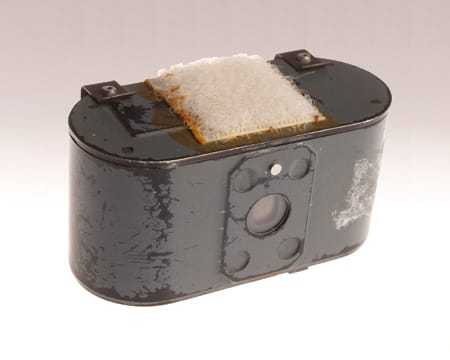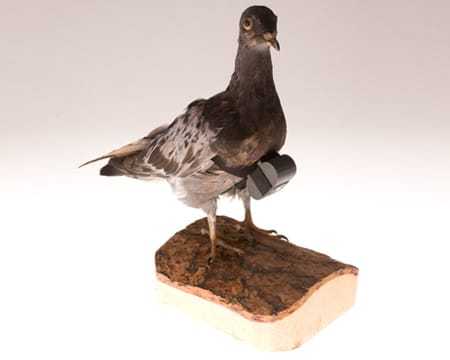Artifact Details

Pigeon cameras were ultimately ineffective, as the birds had trouble flying over the exact locations CIA needed images of.
CIA’s Office of Research and Development developed a camera small and light enough to be carried by a pigeon. With the camera strapped to its breast, the bird would be released. With the camera running, the bird would fly over a target on its return home. Being a common species, the pigeon concealed its role as an intelligence collection platform among the activities of thousands of other birds. Pigeon imagery was taken within hundreds of feet of the target so it was much more detailed than imagery from other collection platforms. (Aircraft took photos from tens of thousands of feet and satellites from hundreds of miles above the target.)
The camera could be set to begin taking photographs after release or after a pre-set delay. The camera took a series of still images at a set interval. A tiny, battery-powered motor advanced the film and cocked the shutter. Details of pigeon missions are still classified.
Artifact Specs
4.7 cm x 2.4 cm x 2.2 cm
(L x W x H)
Additional Photos


Video
The Debrief: Behind the Artifact - Spy Pigeon
The Pigeon Camera is one of our older artifacts where parts of the mission are actually still classified, but what I can tell you a little about is why we chose this animal and how it was deployed.
The CIA can learn a lot from reconnaissance photography and with planes like the U2 and the A-12 and satellites like Corona in the sky, the CIA had a window into a whole new world of intelligence, but unfortunately those planes are taking photographs from incredible heights. So if we wanted to get into a target area with more detail, the CIA was going to have to get creative and return to the animal kingdom again.
CIA’s Office of Research and Development created a camera small and light enough to be carried by a pigeon. With the camera attached to its breast the pigeon would fly over a target area on its return home. With the pigeon being a common species, it was able to conceal itself as an intelligence collection platform among thousands of other birds.
Pigeon imagery is taken from hundreds of feet above the target, whereas planes like the A-12 and the U2 were taking photographs from tens of thousands of feet and satellites like Corona were miles above the target. The pigeon camera allowed the CIA to have a much more detailed view of what was going on in an area. The camera could begin taking pictures immediately upon release or it could have a preset delay. The camera took a series of images at a set interval and there is actually a small battery operated motor that advanced the film and cocked the shutter.
